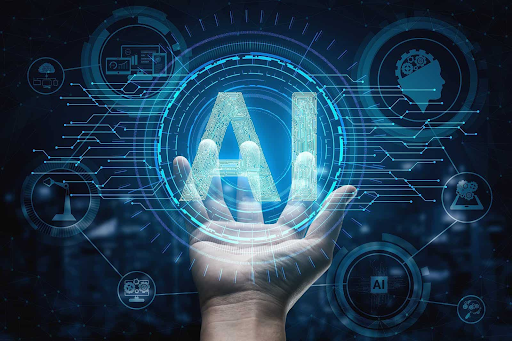Artificial intelligence (AI) is no longer a futuristic buzzword. It’s an active force guiding how companies, both large and small, make decisions every day. What started as experiments in automation and prediction has become deeply embedded in core business processes. From deciding which customers to prioritize to determining how much inventory to keep on hand, AI is now a daily decision-making partner.
This shift has been driven by the explosion of data, affordable computing power, and the increasing sophistication of machine learning models. Businesses that once relied on gut feeling or static spreadsheets now leverage dynamic AI-driven systems. These tools don’t just provide answers—they adapt, predict, and learn, giving decision-makers a real-time edge.
The story of AI in business is no longer about “if” companies will adopt it, but “how effectively” they can harness it. To understand the scale of this change, let’s explore how AI is reshaping everyday decisions across strategy, finance, operations, customers, and the future of work.
1. Strategic Decisions: Seeing Around Corners
At the highest levels of leadership, AI is transforming strategic planning. Traditional strategy relied on historical data, executive intuition, and long planning cycles. Today, AI helps leaders test scenarios, forecast risks, and explore opportunities in ways that human teams alone could not manage. For example, predictive analytics can scan market signals—social media chatter, consumer spending patterns, competitor pricing—and project how trends may shift within weeks, not years. Executives use this to decide where to allocate resources, which markets to enter, and which products to prioritize.
A common scenario is scenario planning. AI models simulate different futures: What happens if inflation spikes? How will supply chains react to new tariffs? Instead of relying on outdated quarterly reports, leaders can see the ripple effects of these changes in real time.
This doesn’t eliminate human judgment—it enhances it. Leaders still bring context, creativity, and values to the table. AI simply makes the decision-making process more informed and less biased by incomplete data.
2. Financial Decisions: From Gut to Granular
Finance has always been about precision, but AI takes it to new levels. CFOs no longer have to rely solely on static cash flow models or conservative assumptions. Instead, machine learning tools analyze millions of transactions, external economic data, and industry benchmarks to provide dynamic insights.
One of the most impactful applications is in credit risk assessment. AI models detect patterns in payment histories, supplier relationships, and even macroeconomic signals that indicate potential defaults before they happen. This allows businesses to make smarter lending, credit, and partnership decisions.
Another growing area is financial forecasting. Instead of waiting for monthly or quarterly reconciliations, companies can generate rolling forecasts that update daily. This means leadership can adjust budgets, cut unnecessary costs, or seize emerging opportunities with much greater agility.
Even everyday decisions, like approving expenses or managing procurement, are increasingly AI-driven. Automated systems flag anomalies, detect fraud, and recommend cost-saving alternatives. Finance teams spend less time crunching numbers and more time making strategic calls.
3. Operational Decisions: Efficiency at Scale
Operations are where AI’s impact is perhaps the most visible. Every day, managers must decide how to schedule employees, maintain equipment, manage logistics, and allocate resources. AI turns these decisions into data-driven processes that adapt constantly.
In supply chain management, AI optimizes routes, predicts delays, and adjusts inventories based on real-time demand signals. Retailers like Walmart and Amazon already use these systems to anticipate customer needs and ensure shelves stay stocked. A delayed shipment in one port doesn’t create chaos—it triggers an AI-driven reallocation plan across the network.
Manufacturing plants also benefit from predictive maintenance. Instead of reacting when machines break down, sensors and AI models predict failures before they occur. Managers can schedule repairs proactively, reducing downtime and avoiding costly production halts.
Even workforce scheduling is being reshaped. AI systems analyze seasonal demand, local events, and employee availability to create optimal rosters. For industries like hospitality and healthcare, this means meeting customer needs while reducing burnout and overtime costs.
4. Customer Decisions: Anticipating Needs in Real Time
Customer-facing decisions may be where AI feels most personal. Every time a company decides which ad to show you, which product to recommend, or how to respond to your service request, AI is in play.
E-commerce giants pioneered recommendation engines, but now even small businesses leverage AI to personalize experiences. Machine learning models analyze browsing behavior, purchase history, and demographic data to tailor offers in real time. This boosts conversion rates and customer satisfaction.
In customer service, AI-powered chatbots and virtual assistants resolve common issues instantly. But the real power lies in escalation. When a human agent takes over, they already have an AI-curated summary of the customer’s problem, past interactions, and suggested solutions. This makes the conversation faster, smoother, and more effective.
Marketing decisions are also shifting. Instead of blasting the same campaign to millions, businesses now run micro-campaigns optimized by AI. These campaigns test, learn, and adapt automatically, ensuring that budgets are spent where they deliver the highest ROI.
“AI has completely changed how we view personalization,” says Alex Vasylenko, Founder of Digital Business Card. “It’s no longer about segmentation—it’s about anticipating what each customer wants in real time.”
AI allows businesses to anticipate needs rather than react to complaints. The best customer experience is when the customer doesn’t even need to ask—AI has already made the right decision for them.
5. Human Resources: People Decisions with Precision
Hiring, training, and managing people are some of the most complex decisions businesses face. Traditionally, HR relied on resumes, interviews, and limited performance metrics. AI introduces objectivity, scale, and predictive power.
For recruitment, AI tools scan thousands of applications, filtering candidates based on skills, experience, and cultural fit indicators. While bias remains a concern, properly trained AI models reduce unconscious bias by focusing on data rather than superficial impressions.
Once employees are hired, AI-driven platforms recommend personalized training programs based on skills gaps and career aspirations. For managers, predictive analytics highlight employees at risk of burnout or turnover, allowing interventions before problems escalate.
Performance management is also changing. Instead of annual reviews, continuous AI-powered feedback loops provide real-time insights. Employees can see how their work contributes to business goals, and managers can reward high performance faster.
These tools don’t replace human empathy but empower HR leaders to make better, fairer, and more strategic decisions about people.
6. Risk Management: Seeing Threats Before They Happen
Risk management is another area where AI is indispensable. Every business decision carries risks—financial, operational, reputational—and AI helps companies identify, measure, and mitigate them proactively.
Cybersecurity is a prime example. AI systems monitor network traffic, detect unusual activity, and respond in milliseconds—far faster than human analysts. This allows companies to prevent breaches before they spread.
In supply chains, AI identifies vulnerabilities such as over-reliance on a single supplier or geopolitical risks in certain regions. This allows companies to diversify their sourcing before disruptions occur.
Even reputational risk is now managed with AI. Sentiment analysis tools monitor social media, news, and reviews to detect early signs of public dissatisfaction. Companies can respond quickly, avoiding crises before they spiral.
By turning risk management into a predictive science rather than a reactive process, AI enables leaders to make bold moves with greater confidence.
“The key advantage of AI is pattern recognition at scale,” explains Allen Liu, Tech Lead & Content Specialist at FreSound. “It picks up on subtle signals humans overlook, which means risks can be flagged before they snowball into real problems.”
7. Everyday Small Business Decisions
AI isn’t just for Fortune 500 companies. Small and medium-sized businesses (SMBs) are using affordable AI tools for everyday decisions.
For example, a local restaurant can use AI-powered inventory systems that predict demand based on weather, events, and seasonal patterns. This reduces waste and improves profitability.
Freelancers and consultants use AI-powered financial tools to decide when to invoice, how to price their services, and which clients are most profitable. Marketing tools like HubSpot and Mailchimp now include AI-driven recommendations that help even the smallest businesses run professional campaigns.
What’s transformative is accessibility. AI is no longer locked behind massive IT budgets. Cloud-based platforms, APIs, and SaaS solutions democratize AI for everyone. For SMBs, it’s like having a data scientist on staff—without the six-figure salary.
8. Ethical and Cultural Dimensions of Decision-Making
With AI influencing daily choices, businesses must also consider ethics. Just because AI can recommend a decision doesn’t mean it should be followed blindly. Transparency, accountability, and fairness are crucial.
Bias in algorithms can lead to unfair hiring decisions, discriminatory lending practices, or skewed customer targeting. Companies must audit their AI systems regularly to ensure ethical outcomes.
Culturally, there’s also the challenge of trust. Employees may resist AI-driven decisions if they feel excluded or replaced. Leaders must communicate that AI is a tool, not a threat. It augments human judgment rather than replaces it.
Ultimately, the businesses that succeed with AI will be those that balance efficiency with responsibility. The goal is not just smarter decisions but better ones—for shareholders, employees, and society.
9. The Future of Decision-Making: Human + AI Synergy
Looking ahead, AI will continue to evolve from a support tool to a true decision partner. Generative AI, natural language processing, and advanced simulations will allow executives to ask complex “what if” questions and receive nuanced, human-like answers.
Imagine a CEO asking, “What happens if we expand into Southeast Asia next quarter?” and receiving a detailed analysis that considers supply chain shifts, hiring needs, customer demand, and financial projections—all in real time.
In this future, decisions won’t just be faster or more accurate. They will be collaborative, combining the best of human intuition with the scale and speed of AI. Leaders will spend less time gathering data and more time applying creativity, empathy, and vision.
Conclusion: AI as the New Business Partner
Artificial intelligence is no longer an experimental add-on. It’s a core part of how businesses make decisions every single day. From strategy to operations, finance to HR, customer experience to risk management, AI provides clarity where there was once uncertainty.
But the real transformation is not just about smarter choices—it’s about cultural change. Businesses are learning to trust AI without losing sight of human judgment. The companies that strike this balance will gain not only efficiency but resilience, agility, and trust in an unpredictable world.
AI isn’t replacing decision-makers. It’s reshaping what it means to make decisions at all. And in that reshaping lies the blueprint for the future of business.









